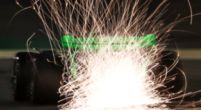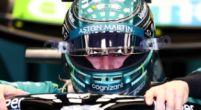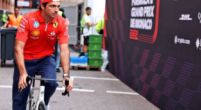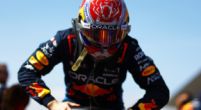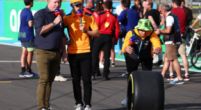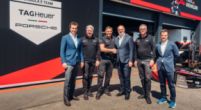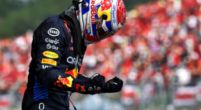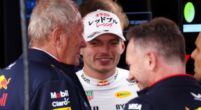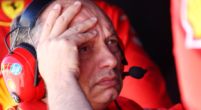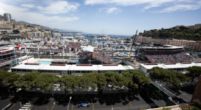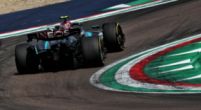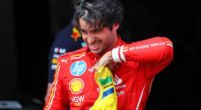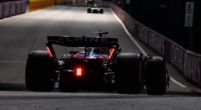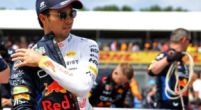Tech

Ferrari make these aggressive changes in hope of troubling Red Bull
With almost a full week before the Emilia Romagna Grand Prix, Ferrari decided to take advantage of the second (and last) 200 km filming day of the season both to do commercial filming for the new HP partnership and especially to test the new SF-24 EVO at Fiorano Circuit last Friday. The updated car showed a lot of innovative solutions, which could give Ferrari the performance needed to catch up with McLaren and Red Bull for the rest of the season. Let’s try to have a look at the technical solutions hidden behind the SF-24 EVO.
As team principal Fred Vasseur underlined after the Miami Grand Prix, “We don't have to expect that it will be a game changer, but it's so tight that this (package) can bring performance.” Despite his words preaching calm, Ferrari has done a massive job since the beginning of the season to deliver this package at Imola, and, seeing what McLaren was able to do last time out in Miami, they are expecting quite a big step forward.
The goal is to increase the amount of efficient downforce generated by the Venturi channels so that thinner rear wings can be used on the majority of circuits. Moreover, the team aims to improve the car's behaviour out of the slow corners and in traction, which has been one of Ferrari’s Achilles heels since the very beginning of the season.
The SF-24 EVO shows many innovative solutions
The SF-24 updated version showed interesting solutions in all the crucial areas of the car: cooling inlet, sidepod, floor, engine cover and a small update on the rear wing.
The cooling inlet has been completely redesigned compared to the previous version, adopting a solution which combines some concepts from Red Bull and Alpine. As can be seen from the drawing below, the cooling inlet now has a "shark mouth" shape, as the upper tray has been lengthened and moved further forward, although in a less extreme way than what is seen on the RB20. Furthermore, the lower lip has now been moved back and has been slightly inclined in its outermost portion to direct the air towards the side wall of the sidepod itself. The actual cooling inlet now has a much larger air inlet surface: the horizontal and vertical inlet (which was previously dedicated to the S-Duct) have been combined into a single inverted “L” inlet, as highlighted in yellow in the drawing below.
This solution has two main objectives: on the one hand, the airflow rate destined for the Power Unit is slightly increased, improving the cooling of all the internal components. On the other hand, this solution allows to maximise the undercut, increasing the flow rate of air under the cooling inlet. In a closely related way, the lower portion of the sidepod itself has been further hollowed out to increase the flow of air, which feeds the air channel above the floor, to generate more downforce at the rear end of the car(white arrow).
The change in the design of the upper tray has also determined a slight change in the mirror support (blue arrow), which now has a longer vertical support that directs the air towards the waterslide inside the sidepod.
Clear changes were noticed in the floor edge area. The distance from the car made it impossible to see the changes to the floor fences. As for the floor edge, it is now a separate element from the actual bottom (previously, they were attached in the terminal portion). The vortex generators located below the upward-sloping edge have been redesigned and now have a more pointed shape in their terminal portion. At the same time, the long "knife" is now connected to the floor in the terminal part of the sidewalk with a metal support (red arrows).
This different design of the floor edge (and certainly also of the keel and floor ceiling underneath the car) has both the goal of improving the management of the front tyre wake, pushing the harmful turbulences to the Venturi channels outwards, and also improving the generation and management of vortices along the floor edge to better seal the flow underneath the car. This increases the "efficient load" (i.e. low drag downforce) produced underneath the car.
The side view allows us to spot another massive change in the engine cover area. As highlighted by the black arrow, the SF-24 now features a completely different design of the slits along the bodywork and of the engine cover itself. The vent has been enlarged and the bonnet has a shaped fairing useful for conveying the hot air exiting towards the beam wing, with an advantage in terms of aerodynamic efficiency.

All these changes in the central and rear parts of the car are not casual: since Barahin, Ferrari has particularly struggled at low speeds, and these changes aim to optimise the downforce produced by the Venturi channels at different heights from the ground. This could allow the engineers to make more aggressive choices (regarding stiffness) on the mechanical set-up, improving the SF-24 in slow corners and under traction.
Moving now to the next view, the drawing below shows a massive change to the winglets located at the foot of the halo: the drawing on the left shows that, previously, the S-Duct exit duct was preceded by a vertical profile that was connected to the halo about halfway up. The updated version, however, due to the disappearance of the internal S-Duct, shows a "Cobra winglet" (blue arrow): a flow diverter characterised by a curved vertical profile and a horizontal and pointed upper portion, helpful in managing the flow directed towards the engine cover and rear end of the car.
This change aims to improve aerodynamic efficiency and is closely related to the new designs of the cooling inlet and the engine cover.
Finally, a small change was noticed at the cut in the endplate transition on the rear wing: as depicted below, the terminal portion of the DRS flap now presents a more sharp and pointed surface (orange arrow) compared to the previous version.


This solution's main objective is to fragment the vortices generated by the rear wing into many small vortices, consequently reducing the drag produced and improving the transition between the two pressure areas behind the wing.
All these massive changes could also help increase the race pace performance, allowing Ferrari to fight on equal terms with McLaren and maybe also with Red Bull on some specific circuits. Only the track will tell how big the leap Ferrari have made, as Red Bull are also expected to bring an upgrade package next weekend in Imola.
Despite this, the upgrade race has officially begun and could really contribute to offering very exciting battles in the next few rounds of the Championship.



